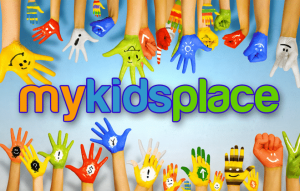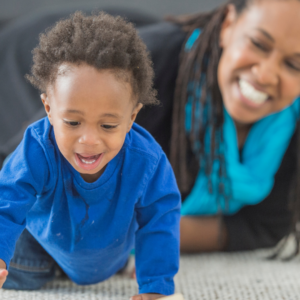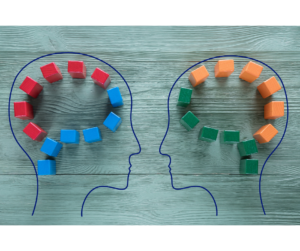Introduction to Sensory Processing
The study of sensory processing skills and the impact of sensory processing differences on child development was pioneered by A. Jean Ayres. Her research established the framework for sensory integration theory. Most pediatric occupational therapists (OTs) agree that sensory processing differences can have a significant impact on a child’s behavior and development. Dr. Ayres’ 1979 publication “Sensory Integration and the Child“ is in my library and I have recommended it to parents to better understand this subject.
What is the Science Behind Sensory Processing Theory?
Dr. Ayres obtained both an undergraduate and graduate degree at the University of Southern California (USC). The study of sensory processing has continued long after Dr. Ayres’ passing and USC continues to be at the forefront of research in this area. The topic is substantial and believed relevant by many, however, it is a complex and overlapping study of neurology and psychology. This has proven very hard to establish rigorous scientific proof for treatment methods. As such, many insurers will not support “sensory” interventions.
My Streamlined Explanation
Rather than use many of the terms found in textbooks on sensory processing theory, I like to describe sensory processing in terms of “volumes” and “pathways”. The pathway is the connection from our brains to the outside world through one of our eight sensory systems. “High volume” pathways deliver lots of sensory information to the brain where low volume does not.
Examples in Sensory Processing Differences in Context
For many people, the volumes of any one of our sensory systems will vary but is at a level that we function appropriately. We all know someone or relate to the phrase “she has a nose like a dog,” or to the thrilling feeling of a roller coaster. These are examples of sensory processing differences. You might have guessed that people who are keenly aware of a sensation are the ones I refer to as having a “high volume” pathway. What’s really important to understand is just how vastly our differences can vary.
Is Addressing Sensory Processing Differences Functional?
OT’s find ways to improve functional performance across a wide variety of areas for their clients. We understand and believe that sensory processing differences profoundly influence a child’s experience of the world. These experiences then shape their development and participation in life. Once we’re “ok in our skin” and have found balance in our sensory relations with our environment, the brain is “freed up” for higher level processing. Until then, we see behavior and emotions that relate to the underlying imbalance of the sensory system.
Developing a Sensory “Profile”
Working closely with an occupational therapist can help families understand why their child behaves a certain way, won’t eat, becomes upset for no apparent reason, or many other observed behaviors. One important aspect, in my opinion, is to start with the understanding that we’re all a blend of ‘high’ and low’ volumes. Generally speaking, I’ll see high volume pathways avoided while low volume pathways are sought out.
A General Prescriptive for Sensory Processing Differences
My approach to working with children with sensory processing differences is to “boost the lows” and “cut the highs” with the goal of creating experiences. These sensory experiences gradually reshape the nervous system based on the concept of neuroplasticity. This is where sensory diets come in.
What is a Sensory Diet?
A sensory diet refers to the selection of activities that “feed” an area of need in the sensory system. By feeding this need, we seek to desensitize or “take the edge off” a high-volume pathway. Or conversely, increase the connectivity of a low-volume pathway. The intent is to create enough balance in the sensory systems to allow a child to focus on higher-level cognitive tasks.
A Typical Sensory Perspective
We all subconsciously “feed” our sensory needs on a daily basis. For example, say you work a desk job that requires long periods of sitting. Most of us will seek some type of movement or stretching to reconnect with our bodies. Our focus decreases without some type of movement. Someone with an inherently “low volume” pathway for their tactile system might find themselves idly playing with their hair or the fabric of their clothing to maintain attention to the task at hand.
Consideration When Designing A Sensory Diet
Sensory diets are individually designed activity plans that help children balance their sensory systems. Therefore, the short-term goal is to increase participation in an activity so they can acquire a new skill. A sensory diet essentially provides the appropriate type of sensory input. With this input, a child can regulate and organize their nervous system. Overall, the long-term goal is to reshape the nervous system and the response to sensory sensations. As a result, it is very important to understand that multiple sensory systems are involved in any given task. Working with a skilled occupational therapist can help you refine your understanding of which systems should be focused on in the diet.
What Should I Include In My Child’s Sensory Diet?
There are many resources available online. Additionally, most sensory diet activities require no special equipment and include physical activities. For example, movement breaks such as jumping, pulling, or pushing heavy objects (rearranging furniture, household chores, building forts, etc.), or skipping can all help kids focus. You might say your child already does these things all the time. Chewing/eating different foods with varying textures, temperatures and/or spices might also be a component of a sensory diet. Likewise, singing or listening to music can be also be part of the “mix”.
Important Considerations Before Selecting a Sensory Diet
In short, there are many things to learn about sensory diets. But, the most important part about selecting a sensory activity is not the what, it’s the why. To summarize, if you feel that sensory processing differences are impacting your child’s participation in life, I’d love to talk with you. You can use our contact form here.



